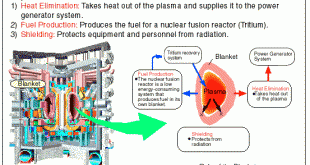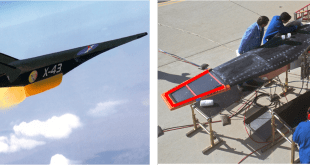Introduction
In an era marked by increasingly advanced underwater threats, surface ships must defend themselves against torpedoes that are not only faster and stealthier than ever before but also integrated with sophisticated guidance systems. Next generation Surface Ship Torpedo Defence (SSTD) systems are emerging as the ultimate solution, providing a fully integrated sensor-to-countermeasure approach that detects, classifies, and neutralizes torpedo threats in real time.
Threat of Surface Ship Torpedo and the Challenges in Defending Against Them
Modern torpedoes pose a significant threat to surface ships due to their advanced guidance systems, high speeds, and stealth capabilities. These weapons are designed to strike quickly and accurately, often employing sophisticated sensors and autonomous navigation systems that allow them to adapt to evasive maneuvers. The inherent difficulty in detecting and tracking these fast-moving underwater threats makes it extremely challenging for surface ships to mount an effective defense. Moreover, torpedoes can be launched from various platforms, including submarines, unmanned underwater vehicles (UUVs), or even surface vessels, thereby complicating the detection and neutralization process.
Defending against torpedo threats is challenging because of the complex, multi-dimensional nature of the underwater environment. The underwater domain is characterized by unpredictable acoustics, variable water conditions, and a lack of direct visual confirmation, which all hinder the effective tracking of torpedo paths. In addition, the need for split-second decision-making in response to an incoming torpedo means that defense systems must integrate advanced sensors, rapid processing capabilities, and immediate countermeasure deployment—all in a compact, shipborne system. This requires not only cutting-edge technology but also seamless integration with a ship’s overall combat system, ensuring that every component—from detection to countermeasure—is synchronized to provide a robust defense against these lethal underwater threats.
The Integrated Sensor-to-Countermeasure Chain
At the core of modern SSTD systems is an integrated sensor-to-countermeasure chain that ensures rapid detection and effective neutralization of torpedo threats. This chain begins with advanced sensing technologies, such as variable depth towed arrays that continuously monitor the underwater environment. Coupled with high-performance winches, these arrays are dynamically adjusted to optimize detection coverage even in challenging sea conditions.
Once an incoming torpedo is detected, the system’s electronics unit rapidly processes the sensor data, classifying the target and evaluating its threat level. This real-time processing capability is crucial in the high-speed context of naval engagements, allowing the system to deploy the appropriate countermeasures almost instantaneously.
Advanced Sensing Capabilities
The effectiveness of any torpedo defence system depends on its ability to detect threats early and accurately. The SSTD system’s sensing capability is driven by state-of-the-art sonar technology, which delivers high-resolution images of the underwater domain. This advanced detection system not only identifies the presence of an incoming torpedo but also provides critical information such as speed, trajectory, and classification. Such precision allows for swift decision-making, which is essential in the split-second environment of modern naval combat.
Dual-Layered Defence: Softkill and Hardkill Capabilities
The next-generation SSTD systems employ a dual-layered defence approach. Softkill countermeasures, such as jammers and decoys, are deployed to confuse or divert the torpedo’s homing system. These decoys emit false acoustic signatures that lure the torpedo away from its intended target. In parallel, hardkill countermeasures are available to physically intercept and neutralize an incoming torpedo, ensuring that even if softkill measures are insufficient, the threat can still be effectively eliminated.
The efficiency of these countermeasures is enhanced by rapid effector delivery mechanisms, such as advanced countermeasure launchers that can deploy decoys or hardkill devices within seconds. This layered approach provides a robust safeguard against the high speeds and advanced guidance systems of modern torpedoes.
Effector Delivery Mechanisms
Critical to the SSTD system are the mechanisms that deliver countermeasures to neutralize threats. The countermeasure launcher is engineered for rapid response, capable of deploying decoys or hardkill devices within seconds of threat detection. This rapid deployment is essential to outpace the advanced targeting systems of modern torpedoes. The coordination between the launcher and the system’s processing unit ensures that the appropriate countermeasure is delivered based on the threat evaluation, whether it calls for softkill diversion or a hardkill strike.
Integrated Processing and Combat System Coordination
The backbone of the SSTD system is its powerful processing unit, which serves as the central hub for integrating sensor data with threat evaluation algorithms. This unit rapidly processes incoming information to classify and prioritize threats, enabling quick decision-making. The system is fully integrated with the ship’s combat systems via a dedicated control panel, which allows for seamless communication between the SSTD system and the vessel’s broader operational network. This integration enhances situational awareness and facilitates coordinated defence actions, not just at the platform level but across an entire fleet.
Platform and Force-Level Defence
Next generation SSTD systems are designed to operate as part of a broader network of maritime defence. At the platform level, the system works in conjunction with other onboard sensors and countermeasures, ensuring that individual vessels can independently detect, evaluate, and neutralize torpedo threats. Beyond individual ships, force-level defence is achieved through networked communication between vessels equipped with SSTD systems. This coordinated approach creates a layered defensive perimeter across the fleet, where multiple ships share sensor data and countermeasure strategies, greatly enhancing collective maritime security.
Platform and Combat System Integration
A significant advantage of next-generation SSTD systems is their seamless integration with a ship’s combat management network. A dedicated control panel enables operators to monitor the entire sensor-to-countermeasure chain in real time, ensuring that data flows smoothly between detection and response. This tight integration not only enhances situational awareness but also allows for coordinated defence actions at both the platform and fleet levels.
Modern SSTD systems are designed to work in conjunction with other onboard systems and can also be networked across an entire fleet. This collective defense capability creates a layered and interconnected maritime security environment, ensuring that multiple ships can work together to counter torpedo threats.
Industry Efforts and Next Generation Torpedo Countermeasure Systems
In response to rapidly advancing torpedo technologies and the threat of technological obsolescence, several major defense manufacturers are now introducing their next-generation torpedo countermeasure systems. These systems are designed to counter the latest torpedo threats by integrating a blend of softkill and hardkill capabilities. For instance, Atlas Elektronik’s SeaSpider Anti-Torpedo (ATT) and Rafael’s TORBUSTER hard-kill systems exemplify this dual approach. They are engineered to neutralize incoming torpedoes by either detonating a warhead to disrupt the torpedo’s structure or using kinetic kill techniques to physically intercept and destroy the threat.
Among these innovations, Sea Sentor stands out as the world’s only in-service sensor-to-countermeasure Surface Ship Torpedo Defence (SSTD) system. It provides a seamless chain of defense through its ability to detect, classify, evaluate threats, and deploy decoys. Deployed with four navies, Sea Sentor comprises a variable depth towed array, a winch system, a countermeasure launcher, an advanced electronics unit, and a comprehensive control panel. Complementing this system is the Expendable Acoustic Decoy (EAD), which is pneumatically fired from the launcher to further confuse or divert an incoming torpedo.
Adding to the momentum, Ultra Electronics Command & Sonar Systems has secured a pivotal role with the UK Ministry of Defence. As the preferred bidder for the next decade of in-service support for the UK’s SSTD systems, Ultra’s Sea Sentor—often referred to as the world’s only in-service sensor-to-countermeasure system—continues to provide comprehensive torpedo detection, classification, threat evaluation, and decoy capabilities. Since 2004, Ultra has delivered 16 Sea Sentor systems to the Royal Navy, which can be retrofitted on all Royal Navy warships and Royal Fleet Auxiliary vessels, ensuring that the UK’s maritime assets remain at the forefront of undersea defense.
These industry efforts underscore a significant trend in naval defense: the drive to integrate cutting-edge technology and advanced processing capabilities into a cohesive system that addresses the full spectrum of torpedo threats. As the maritime security landscape evolves, these next-generation torpedo countermeasure systems are set to play an increasingly critical role in ensuring the survivability and operational readiness of surface ships in an era marked by sophisticated underwater warfare.
Conclusion
Next generation Surface Ship Torpedo Defence systems represent a significant leap forward in maritime security technology. By integrating advanced sensors, rapid processing units, and a dual-layered defence approach, these systems provide a comprehensive solution for detecting and neutralizing torpedo threats. The seamless integration of sensor-to-countermeasure chains with a ship’s combat management network ensures that modern naval vessels are well-equipped to defend themselves against the evolving challenges of underwater warfare. As torpedo technologies continue to advance, these next-generation SSTD systems will be pivotal in safeguarding naval assets and maintaining maritime superiority in an increasingly contested underwater domain.
References and Resources also include:
https://www.naval-technology.com/news/uk-explores-next-generation-surface-ship-torpedo-defence/
 International Defense Security & Technology Your trusted Source for News, Research and Analysis
International Defense Security & Technology Your trusted Source for News, Research and Analysis


